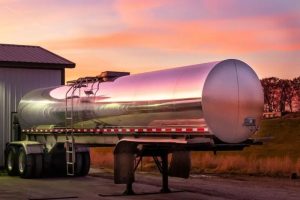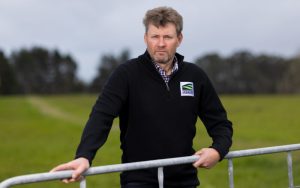
Southland dairy, sheep and beef farmer Dean Rabbidge says farmers rely on winter crops to get animals through winter in healthy condition ahead of calving.
“Over winter, grass growth slows and it doesn’t provide enough feed or nutrition for cows, so they graze winter crops like fodder beet, swedes or kale,” Rabbidge says.
He began preparing for winter last November.

“Selecting the right paddock is key to providing stock with access to shelter and water. Having a detailed feed budget is also important to know how much feed we need for each animal.”
Southland farmers faced a challenging autumn last year as drought struck, but Rabbidge managed to get on top of this by bringing in extra feed.
In bad weather, he’s planning to move animals to shelter under trees and feed them baleage (preserved pasture).
“This will give them somewhere dry, sheltered and warm to lie down,” Rabbidge says.
The farm team have talked through different scenarios to understand when to move stock to keep them comfortable and protected from harsh weather.

On the South Island’s West Coast, dairy farmers Dan and Kate King are focused on applying lessons learnt last winter to keep improving animal care.
From June to December 2021, their district received 1800mm of rain – compared to 1900mm of normal annual rainfall.
“Last winter went relatively well but constant rainfall over spring, with cows calving, led to pasture damage and pressure on feed and supplements. So, we’ve been planning ahead in case we get lots of rain again this winter,” says Dan King.
The Kings have ordered in around 270 bales of meadow hay, in addition to growing winter crops. They’ve also made 200 bales of baleage to feed out when needed over the coming year.
“Having extra feed puts us in a strong position to cope with any adverse conditions, and keep cows in good condition,” says King.

Providing cows with enough lying down time is also a focus. The Kings use back fencing and portable water troughs so cows don’t need to move far for feed and water. This reduces mud, creating a better environment for cows and reducing sediment loss into waterways.
The Kings are also planting 140 trees this year to provide more shelter for cows in hot and cold weather.
DairyNZ’s head of the South Island, Tony Finch, says farmers have been working hard to improve wintering practices and planning ahead for winter.
“Last season, around 90% of farmers had a contingency plan to protect their animals and the environment in bad weather,” says Finch.
“It’s great for farmers to have their efforts to improve winter grazing acknowledged by councils and the Government. This helps fuel their commitment to continuing to improve animal care and wintering practices.”























